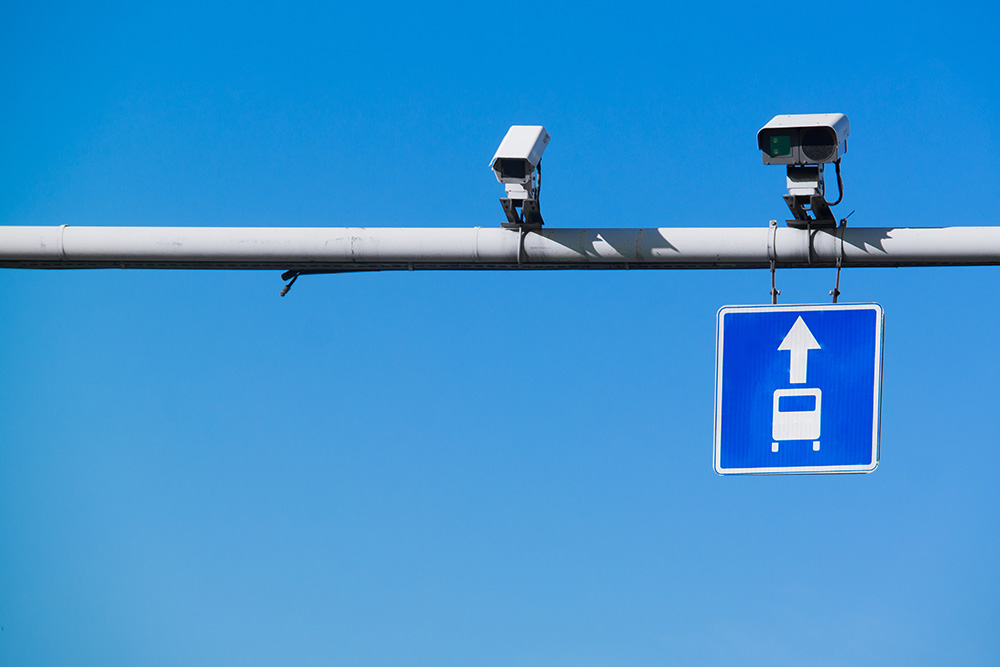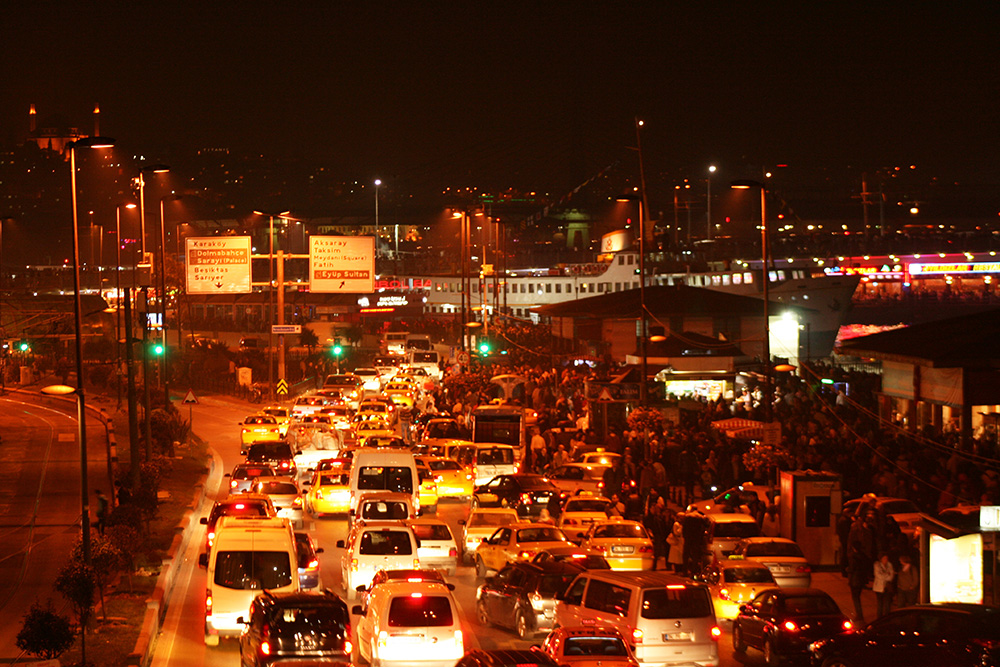
Traffic congestion is one of the biggest bugbears of commuters and with traffic seemingly getting worse by the day, it’s easy to see why. As life resumes after the pandemic and people return to the workplace in greater numbers, the tedious cycle of congestion in towns and cities is becoming exacerbated.
According to research by navigation technology company TomTom, which looked at traffic congestion in 404 cities worldwide in 2021, major routes across the world are already seeing traffic rise to above pre-pandemic levels. And, of course, the more traffic you have on the road means the congestion problem increases and spills over from highways to arterial roads.

These are the same roads that public transport often uses (unless they have dedicated bus lanes), which impacts both the quality of service and schedule adherence. These factors create a cycle that spins like this: congestion gets worse, commute times go up on public transport and the road networks, customer satisfaction goes down, people change their modal choices away from public transport - and that, in turn, increases congestion.
The global problem of congestion is something many cities are trying hard to address. The Mayor of London, Sadiq Khan, recently spoke on the huge cost of congestion in the UK’s capital.
He said: “Whilst we have made huge strides in increasing walking and cycling in London throughout the pandemic, car use has remained consistently high. If we do not double down on our efforts to deliver a greener, more sustainable future we will replace one public health crisis with another – caused by filthy air and gridlocked roads. The cost to both Londoners and the capital cannot be underestimated, with days wasted stuck in traffic, billions lost to the economy and increased road danger and health impacts. Most traffic is caused simply by there being too great a demand for limited street space, meaning the only long-term solution can be to significantly reduce car use in favour of greener means of travel.”
So how do we break this vicious cycle of congestion and how can cities take control of their transport networks?
Holistic management
Taking a holistic and coherent approach to transport management is a good place for cities to start when it comes to taking control of their transport networks. Having a central hub that ties the various functions into an integrated transportation strategy will help to gain an understanding of the impact one mode of transport has on the other. It is important to ensure the different networks form a symbiotic relationship to help identify opportunities and challenges.
A practical example of this was when a public transport bus caught fire on the Sydney Harbour Bridge in September 2016. Due to lack of communication, planning and integration between private and public transport operators, further chaos resulted across public and private modes, including lines of thousands of people at Circular Quay looking to get ferries away from the area and across the bay.
To counter this, Transport for New South Wales implemented its Integrated Congestion Management Program (ICMP) to collate data across all available transport modes to provide a wide-lens view into the operations of the entire region.
Demand versus capacity
Cities must also balance the competing needs of expanding road networks to mitigate traffic, commercial development to increase employment, and/or prioritise housing to meet growth needs.
Once they understand current demand they need to look at methodologies to re-balance that demand on infrastructure to ensure it doesn’t outstrip the available capacity. There are many methods to achieve this, such as tolling on the road networks with congestion zone pricing and dis-incentivising drivers at peak times by offering price differentials on public transport for peak and off-peak times.

London’s Congestion Zone is a great example of successful tolling in the city centre to reduce traffic, decrease pollutants and free up the city to help improve public transport service delivery. After an initial pushback from residents and businesses, London saw a 30% decrease in excess travel time, helping to reverse the cycle of congestion.
In some of the world’s most congested cities, motorists lose hours every day in excess travel time due to being stuck in traffic. A report on Istanbul’s notorious traffic was prepared by academics from Yeditepe University, who monitored traffic data across 5,000km of roadway in the Turkish city for a year. The study found that people using private vehicles for their daily commute lost 70 minutes each day in peak hours of traffic. Distances that could normally be reached in 15 minutes took drivers an average of 50 minutes at peak times.
As the world grapples with the aftershocks of Covid-19, shifting the peak for public transport to avoid overcrowding should be another goal for cities when addressing demand on infrastructure. In the aforementioned research from TomTom, it was highlighted that the traditional rush hour has changed as more people work from home. City roads, in particular, are seeing varying peak times throughout the working week.
In Miami-Dade County in Florida, the local council has introduced a solution for incentivising travellers to travel at quieter times of day. More than 60% of travellers using the Miami Go App signed up to the loyalty programme which offers targeted incentives to specific travellers, the idea being to shift demand in the network and smooth peaks in travel.
Coordinating modes
Optimising demand is another key factor for cities to take into consideration when taking control of their transport networks. To do this, cities must manage the number of stakeholders who are providing mobility there. Private mobility service providers (PMSPs) such as bike-shares, scooter shares, car shares and demand-responsive transport have a critical role to play in augmenting the mobility services provided by public transport networks. They need to become a feeder network to drive use of the public transport system, as well as augmenting areas where transit is sparse.

In 2021, more than one million customers used Transport for London’s cycle hire scheme, including the 178,000 new members who joined the scheme throughout the year. This indicates progress towards TfL’s long-term aim to reduce traffic on residential streets and to build a strategic network for cycling in London. More recently, TfL’s partnership with Tier Mobility to trial electric scooters has enabled it to meet its green agenda while also being a way to connect people to the first- and last-mile ride.
However, it is not just about optimising demand, but having the ability to regulate when and where private mobility services can operate to drive and connect consumers to public transport systems. There are plenty of platforms that offer agnostic solutions to deliver equity across all stakeholders and enable Mobility as a Service (MaaS) and Mobility On Demand (MoD) to function effectively.
Corridors and intersections
Finally, the management of corridors and intersections is critical to keeping the private vehicle operator, the public and private transport operators, and the cyclists and pedestrians, safe and moving around cities to ease traffic and congestion. Artificial intelligence and machine learning are driving such intersection management solutions to deliver optimised flows within cities.
For example, in Bangkok, Thailand, which has some of the world’s most congested and dangerous roads, Cubic’s real-time data makes the intersections safer and more efficient, by tracking vehicles, bicycles, and pedestrians from horizon to horizon and through the centre of an intersection. In fact, across three intersections, the Gridsmart Adaptive System saved 51,964 vehicle commuter hours over the course of a year.
When combined with real-time data from public transport providers and using advanced data analytics, a city can take vehicle locations and automatically change signal priority by optimising the flow of public transportation, ensuring the bus makes its scheduled stop and that the passenger arrives at their destination as planned.
A great example of this is the city of Merida, Yucatan in Mexico which recently implemented a solution across 60 intersections and on 1,500 buses. Real-time bus positioning information was used to give signal priority to transit vehicles. By utilising predictive bus stop arrival software, the system analysed whether the transit vehicle was ahead or behind schedule and appropriately managed the signal, ensuring the transit vehicle remained on time.
 There is no doubt that traffic congestion will continue to increase as the world’s population grows. Yet while it’s impossible to eliminate congestion, there are ways to slow its future rate of increase as we’ve outlined above. By taking control of their transport networks, towns and cities can then put travellers in complete control of their mobility.
There is no doubt that traffic congestion will continue to increase as the world’s population grows. Yet while it’s impossible to eliminate congestion, there are ways to slow its future rate of increase as we’ve outlined above. By taking control of their transport networks, towns and cities can then put travellers in complete control of their mobility.
ABOUT THE AUTHOR
Andy Taylor is senior director, global strategy, at Cubic Transportaation Systems












